Use these Science Fiction writing lessons for kids to guide students in writing their own stories.
Like fantasy, kids enjoy writing Science Fiction because ANYTHING can happen!
I’m not a huge fan of science fiction, but kids love it, so this past summer I offered a science fiction summer writing camp.

The theme for the afternoon art camp was Arctic Adventure. I incorporated the Arctic Ocean and arctic animals into several of the morning Science Fiction writing lessons. It turned out to be a lot of fun!
As a result, I wanted to be sure and share the ideas here for you all to use!
Common Core State Standards
NOTE: These lessons can address the following Common Core State Standards: CCSS.ELA-Literacy.W.K.3, W.1.3, W.2.3, W.3.3, W.3.3.A, W.3.3.B, W.3.3.C, W.3.3.D, W.4.3, W.4.3.A, W.4.3.B, W.4.3.C, W.4.3.D, W.4.3.E, W.5.3, W.5.3.A, W.5.3.B, W.5.3.C, W.5.3.D, W.5.3.E, L.K.2, L.1.2, L.2.2, L.3.2, L.3.2.C, L.4.2, L.4.2.B and L.5.2.
The titles of the guided lessons that I generated and presented were Polar Power, Aliens in the Arctic, Birthday Bash, Exhausted Electronics and Solar Seeds.
The campers heard the ideas for the Science Fiction writing lessons and then ran with it, creating their own unique stories. One rising first grader took the Solar Seeds idea and created his own story titled, “SUN DAY.”
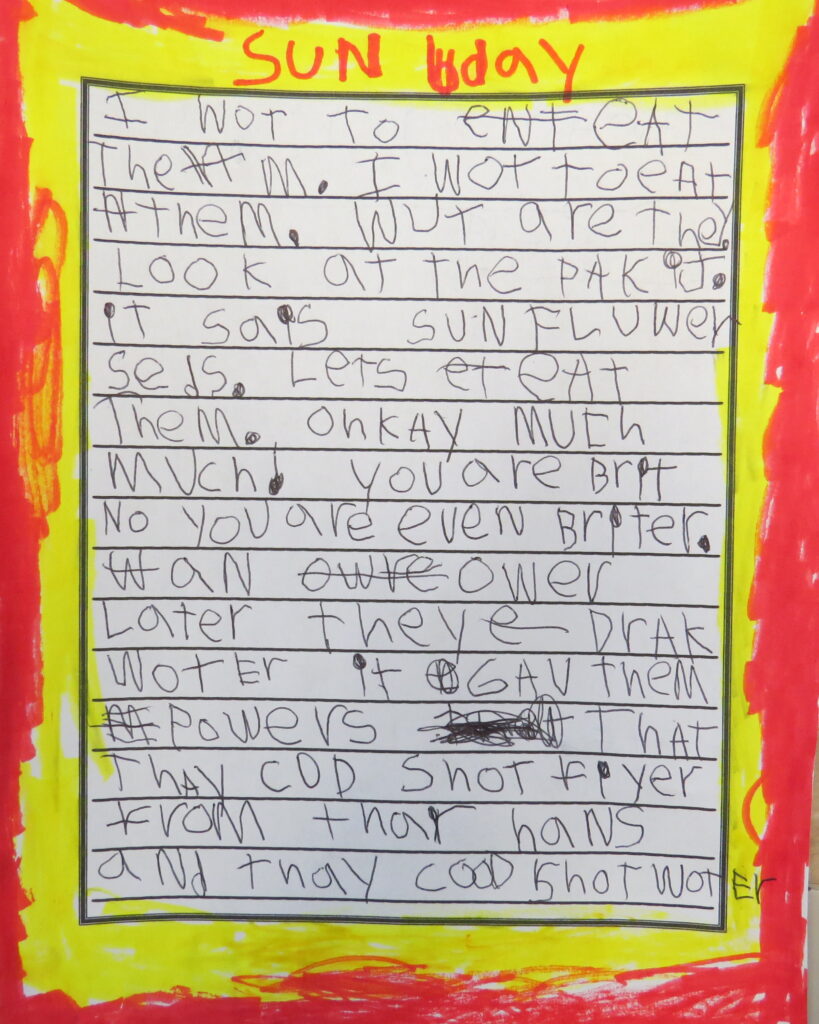
It is so important to remind students that ANYTHING can happen in their stories. These lessons are simply meant to guide them so that they have a clear beginning, middle and end.
Now, let’s talk about the 6 story ideas below.
*This post contains affiliate links. For more information, see my disclosures here.*
There are two pieces to these stories that really engaged my campers; dialogue and super powers.
Dialogue
First, we began each story with dialogue. This is a fun way to help students entering Grades 2-6 learn to correctly write punctuation for dialogue.
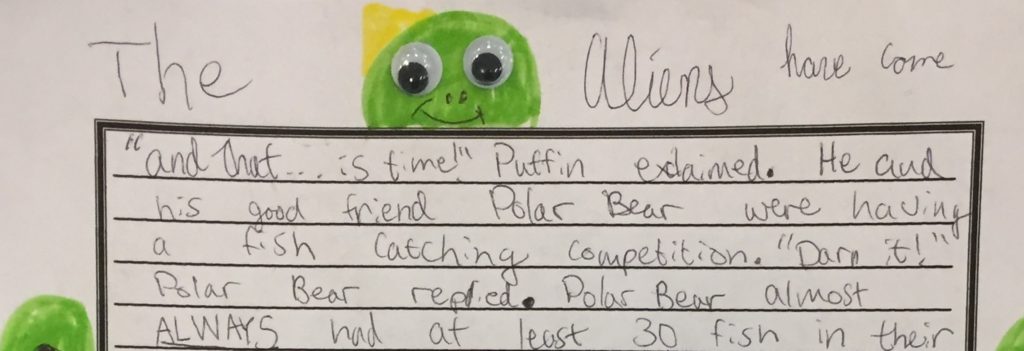
While I don’t worry about punctuation for K-1st Graders, I still want them to write their characters saying something.

Younger writers typically began their stories with friendly dialogue. For example, two polar bears playing and talking or arctic foxes running around and joking.
For the older writers, I encouraged them to write conversations that conveyed a problem.
I explained to the campers that presenting a problem right away, grabs the reader’s attention. It makes the reader want to read more. I pointed out how we as readers get hooked all the time.
Authors often use dialogue to grab our attention and draw us in to keep reading. Check out these examples of problematic hooks!
- A sample hook for for ALIENS IN THE ARCTIC
- “What was that?”
- “Did you hear that?”
- A sample hook for EXHAUSTED ELECTRONICS
- “I’m tired of just sitting here, day after day, night after night.”
- “Someone, please get me out of here.”
- A sample hook for SOLAR SEEDS
- “These are good, but I don’t feel so well. My hands are getting hot.”
- “Whoa, Kai. Are you okay?”
Super Powers
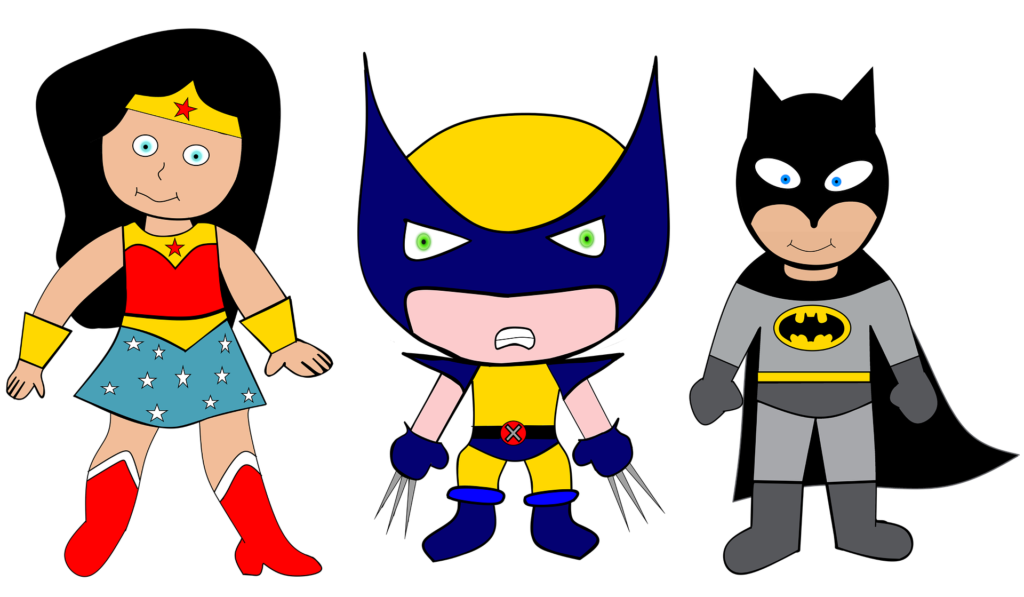
Secondly, each story had to incorporate super powers. The kids love brainstorming super powers! What’s fun is that they not only name off the familiar, but they learn to create their own.
Let’s first look at the familiar. Here’s a list of super powers that children will name off rather quickly:
- Ability to Fly
- Invisible
- Shoot lasers from eyes
- Super jump, speed or strength
- Telekinesis (moving something by thinking it to)
- Teleportation (transporting oneself from one place to another)
- Time Travel (going forward or backward in time)
- …
Then, when I give the students a specific writing prompt, they begin to think of additional super powers specific to the character, scene or situation.
Each prompt below lends itself the opportunity to create new super powers fitting to the story.
Polar Power
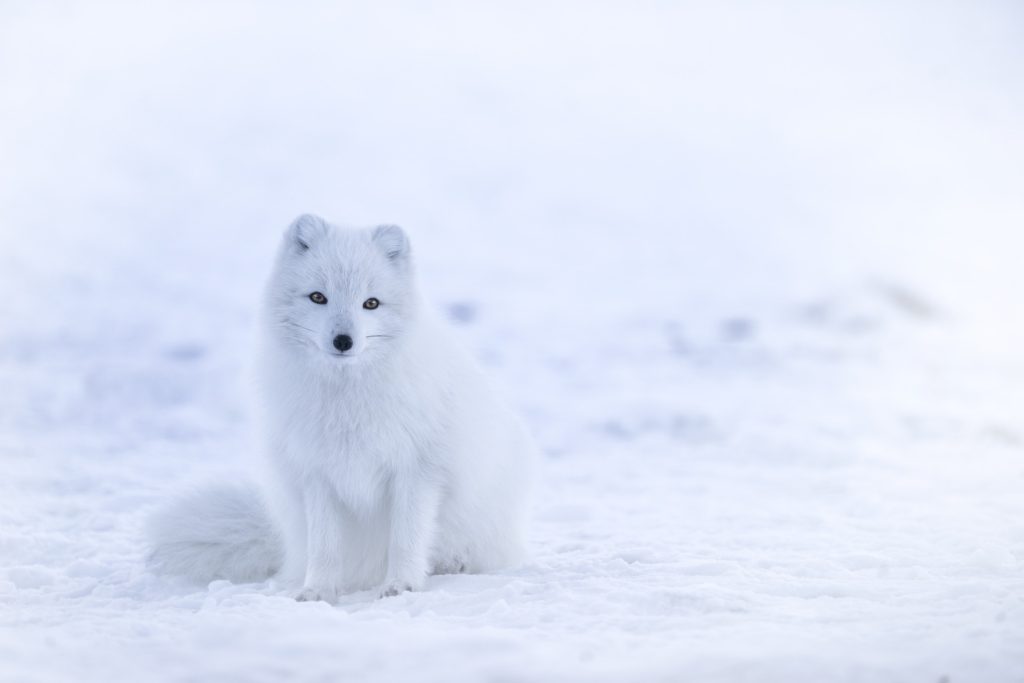
- Arctic Foxes–Claws that extend really far and cut
- Beluga Whale–Shoots Webs
- Ermines–Lightning Fast
- Musk Ox–Horns extend and crush anything in its path
- Polar Bears–Lasers that freeze (or melt) anything in its path
- Reindeer Horns–Shoot webs that freeze anything it catches
- Seals—Super Whack
- Snowshoe Hares–Blind people/animals with their whiteness
- …
Aliens in the Arctic

Aliens:
- Shoot toxic slime
- Melt the ice around them
- Blow bubbles that pop a sticky substance
- Change the weather
- Communicate back to their mother ship
- Innocent super strength
- …
Birthday Bash
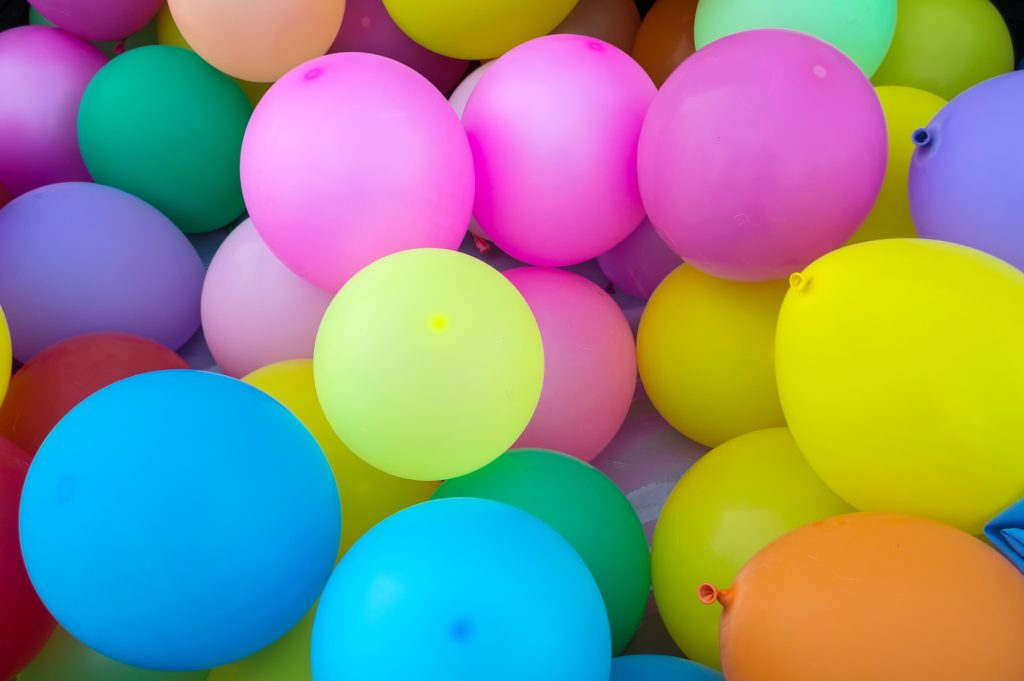
A balloon pops and:
- Causes time travel
- Sprays a laughing gas
- People turn invisible
- Shrinks everyone
- …
Exhausted Electronics

- Electronics talk
- A toaster shoots painful bread crumbs
- A TV turns invisible
- An I-Phone shoots electric shocks
- An I-Pad teleports to another location
- …
Solar Seeds
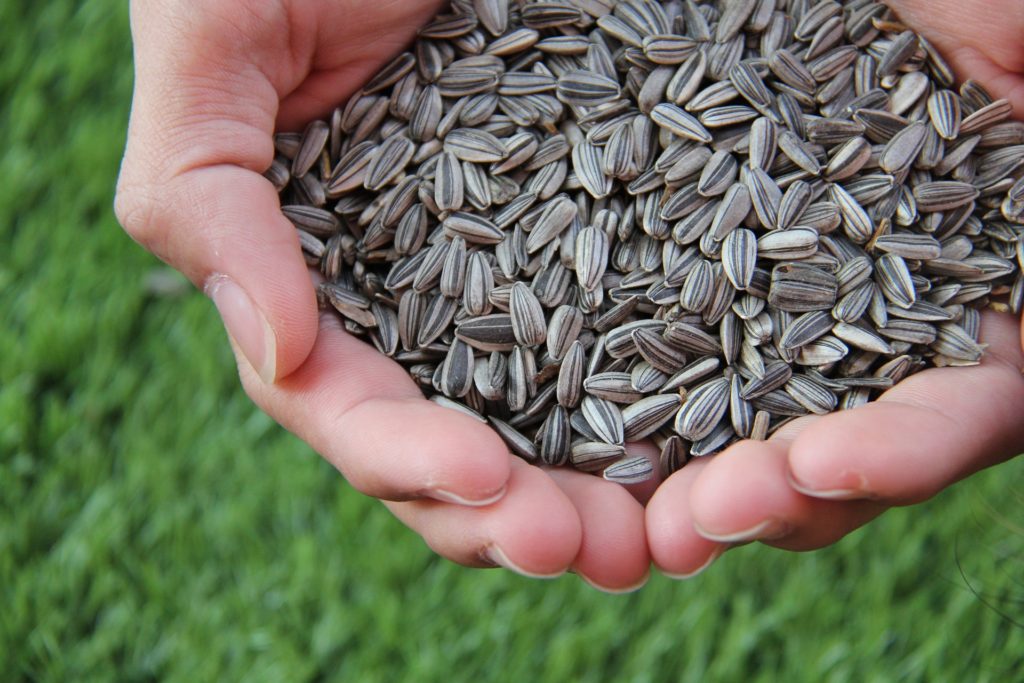
- A person gives off extreme heat or brightness.
- The sunflower seeds blind people.
- A person’s mouth shoots flames.
- A person creates electricity as needed.
- …
Super You

You:
- Fly to outer space.
- Cause people to laugh uncontrollably.
- Grease any surface causing enemies to slip.
- Shrink from the color purple
- Have a mega voice.
- …
6 Science Fiction Writing Lessons
Now for the lessons!
First of all, these 6 Science Fiction writing lessons guide students to write a complete science fiction story in a short amount of time.
To get a full understanding on how I conduct each writing lesson you may want to read the Writing Prompts Introduction post. The lessons outlined below (and all other prompts posted) will make more sense and be easier to follow and use. Here’s the lined paper I use for Grades K-2 and Grades 2-7
While each story line is very different, the format of each lesson is the same. This is very important when teaching writing.
Having a different story line keeps the lessons engaging and fun. Using the same format helps students become comfortable writing a complete and detailed story.
The 5 Sections
The format (or 5 sections) for each of these stories is:
- Dialogue
- Introduce the characters
- All of a sudden,
- Reaction/Action
- Solution/Conclusion
As mentioned in my writing prompts introduction: K-1st Graders are encouraged to write 1 sentence for each section, 2nd Graders 2 sentences, 3rd Graders 3 sentences and so on.
Secondly, these lessons focus on dialogue and story order.
Each of the 6 stories begins with a conversation. I taught 5 of these stories at our week long science fiction camp this past summer and was amazed at how well the campers improved their ability to punctuate dialogue after just 5 days.
Thirdly, each lesson comes with an easy art accent that accompanies students’ work. These art accents are highly motivating to young writers and reward them for their work!
Lastly, at the bottom of the 6 lessons, there is a list of writing games that focus on grammar and the mechanics of writing.
Lesson 1: POLAR POWER
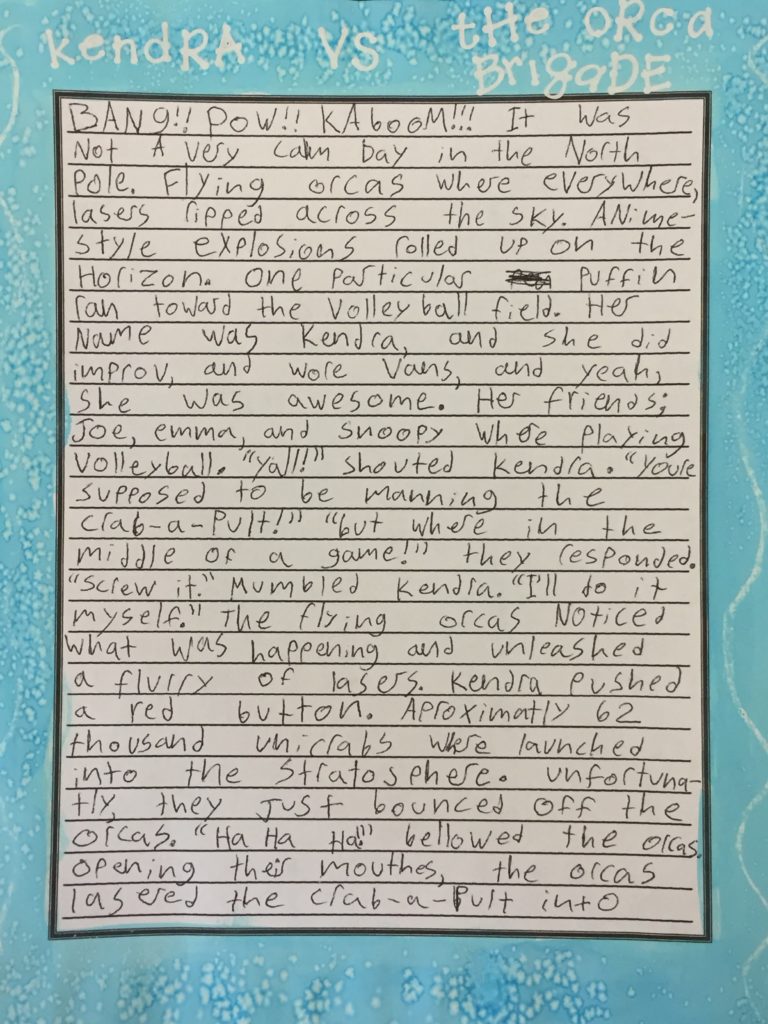
Story Line: Specific arctic animals are playing. There’s a problem. The arctic animals battle using their super powers.
Suggested Art Accent: Watercolor and salt from the list of Snow Art Accents
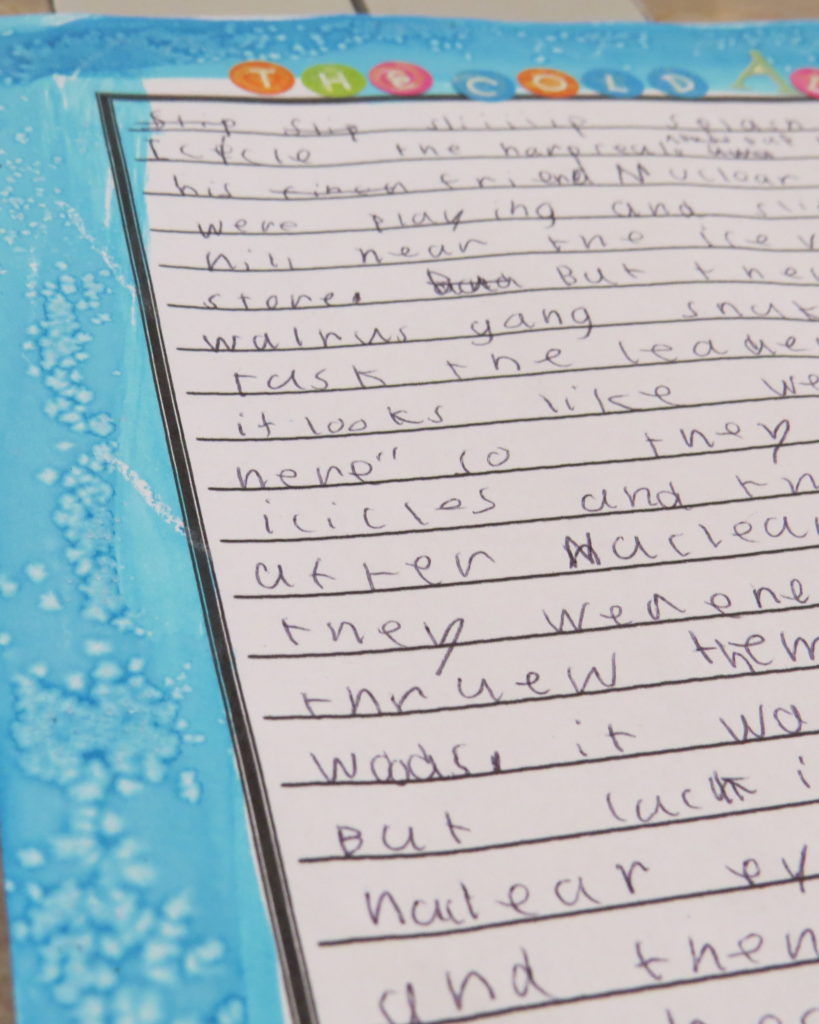
I also had a pack of arctic animal stickers* that the campers used.
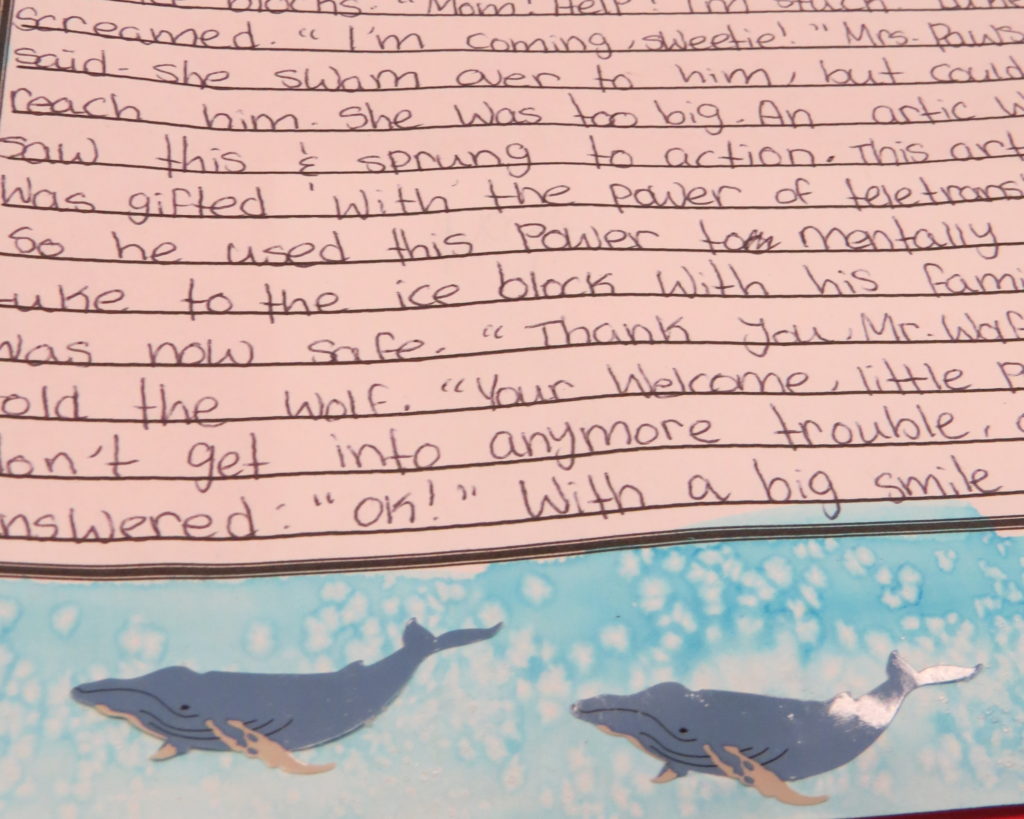
Lesson 2: ALIENS in the ARCTIC
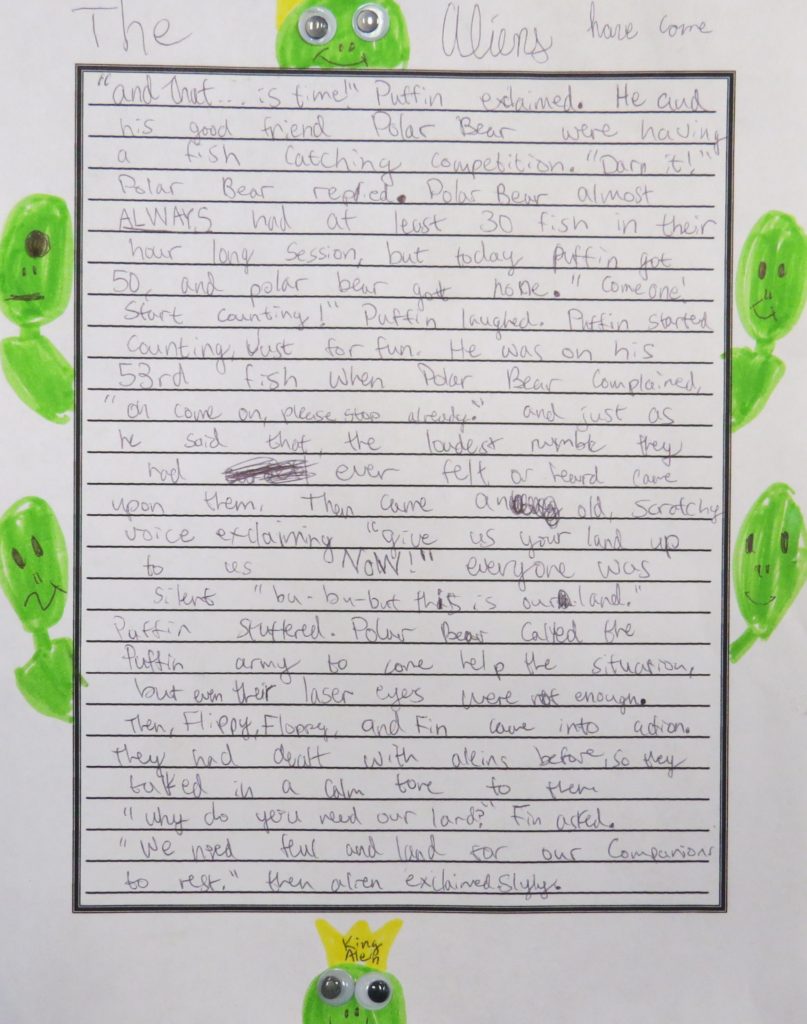
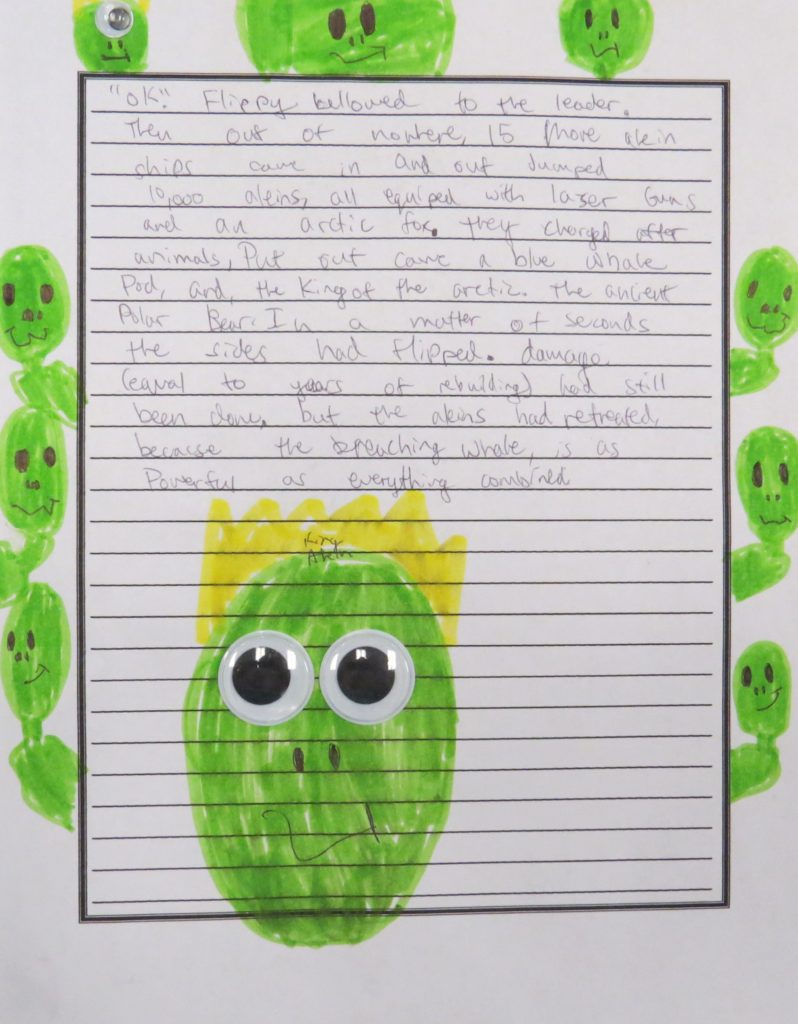
Story Line: Arctic animals are playing. All of a sudden, friendly aliens land in the arctic and are lost OR aliens attack the arctic. The arctic animals have to help or get rid of the aliens .
Suggested Art Accent: Use marker to draw and color aliens around the border.
Then, glue googly eyes* onto the aliens.
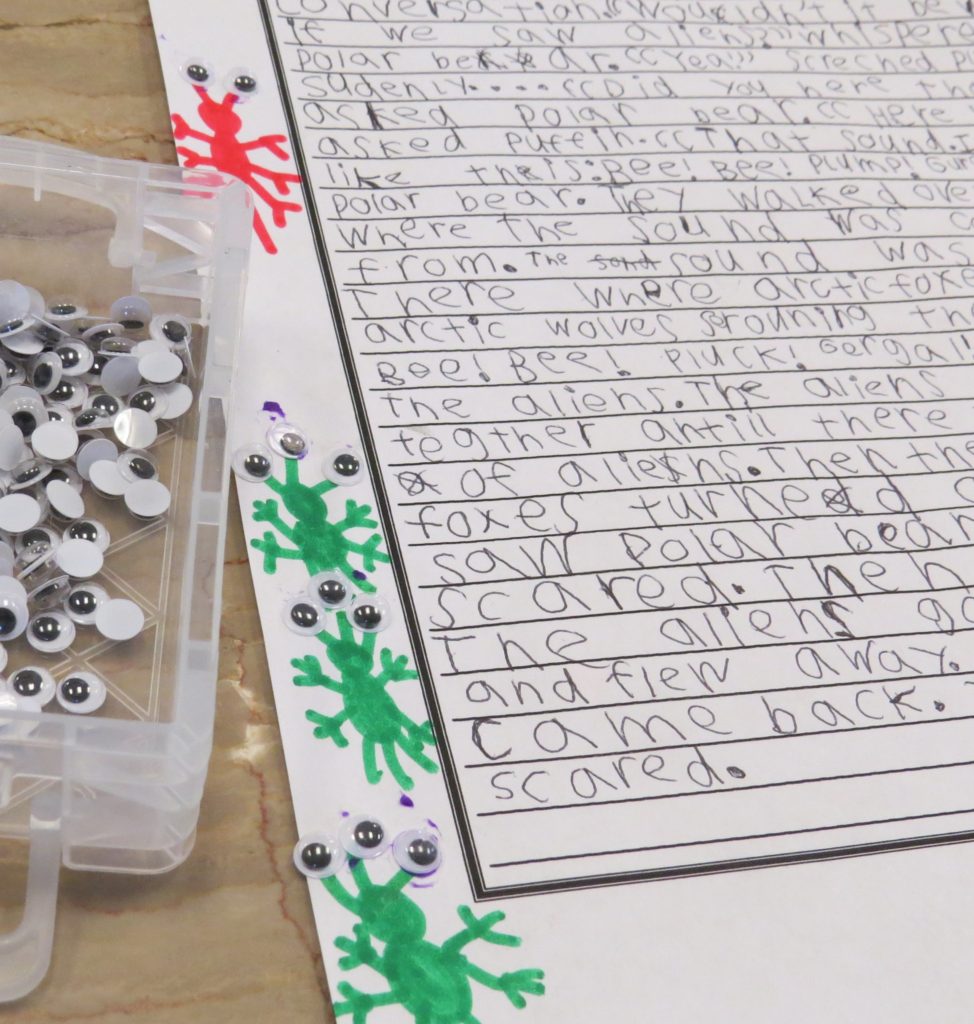
Lesson 3: BIRTHDAY BASH

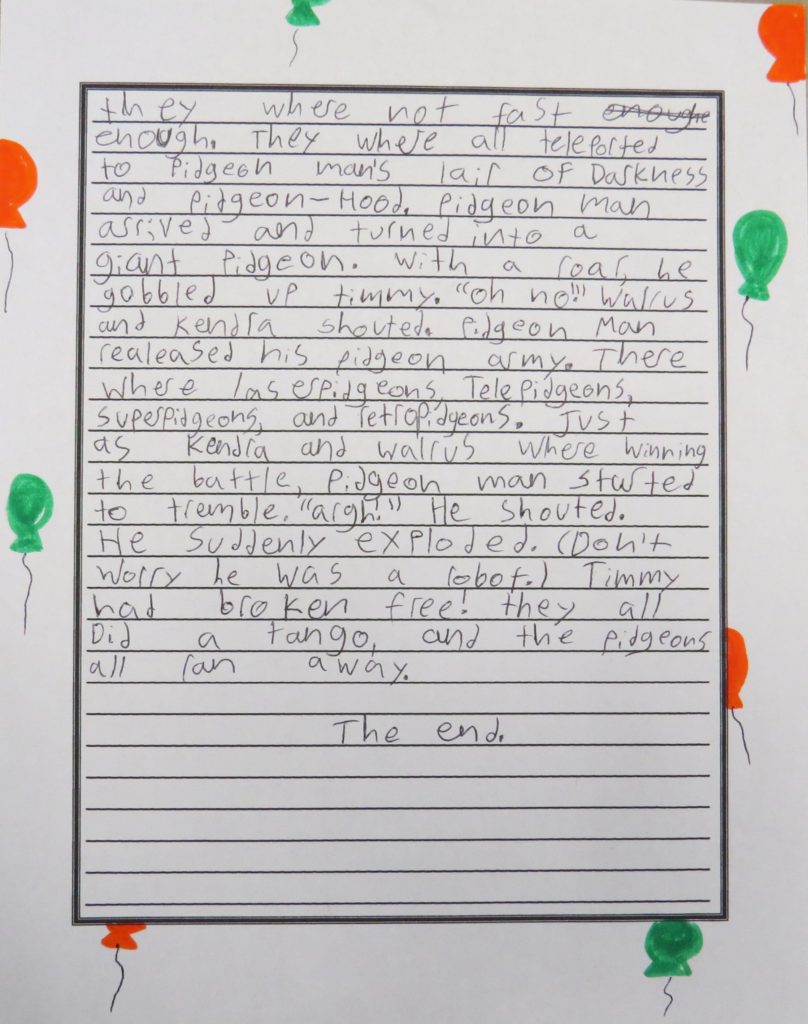
Story Line: A birthday party is going on. All of a sudden, a balloon pops causing everyone to time travel. You have to figure out a way to get back.
Suggested Art Accents: First, fill in the border with any one of the birthday art accents.
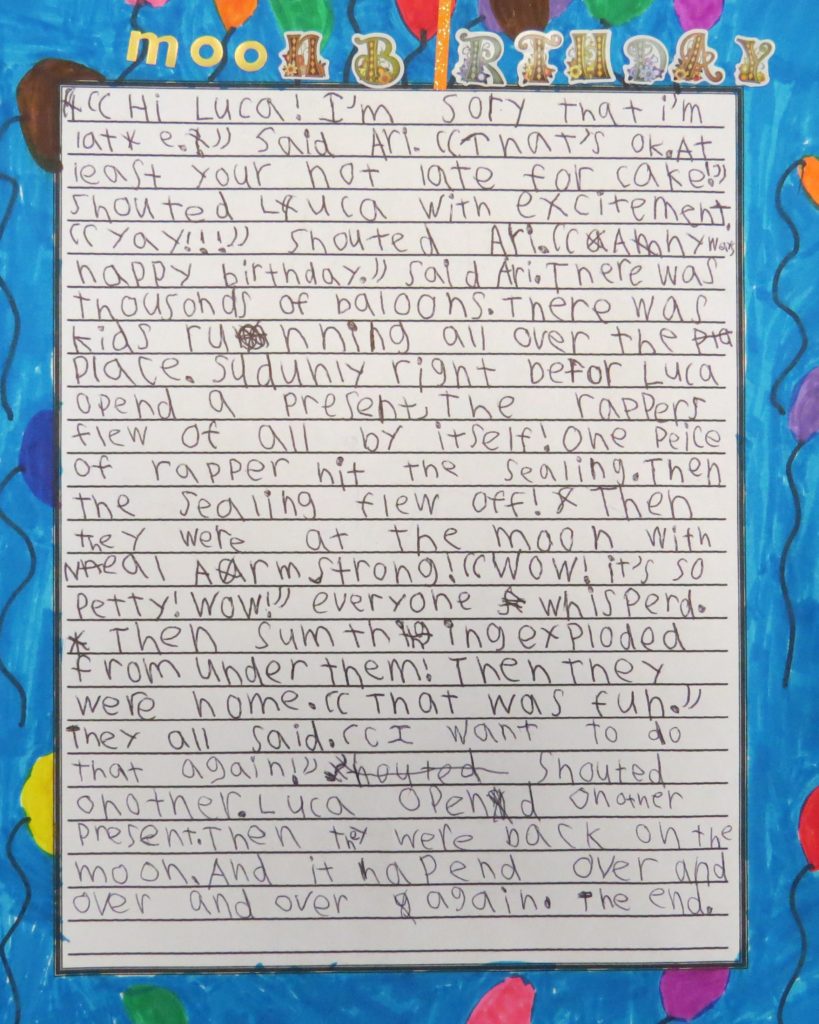
Then, give your students a big colorful balloon to blow up and bounce around. They have a pack of them at the Dollar Tree!
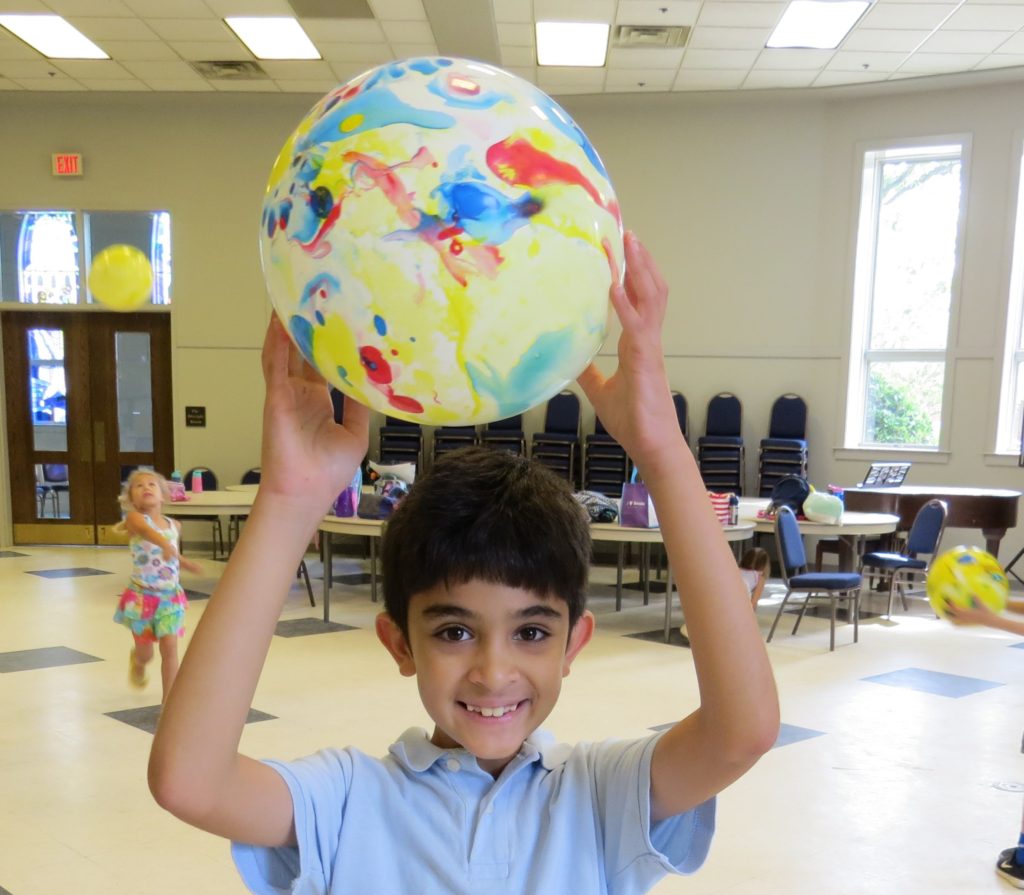
Lesson 4: EXHAUSTED ELECTRONICS
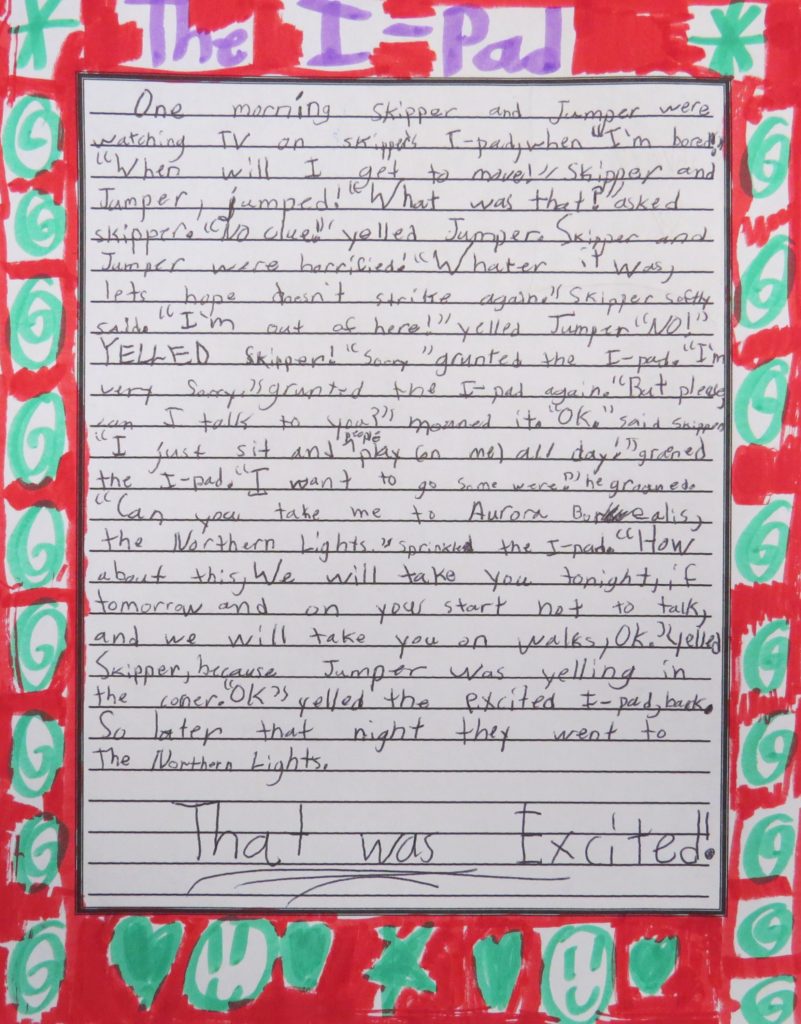
Story Line: The electronics that we use every single day are lonely, tired or unhappy and they finally speak up! You help or battle the electronic.
Suggested Art Accent: The student draws the electronic, cuts it out and pastes it to a scenic calendar page.
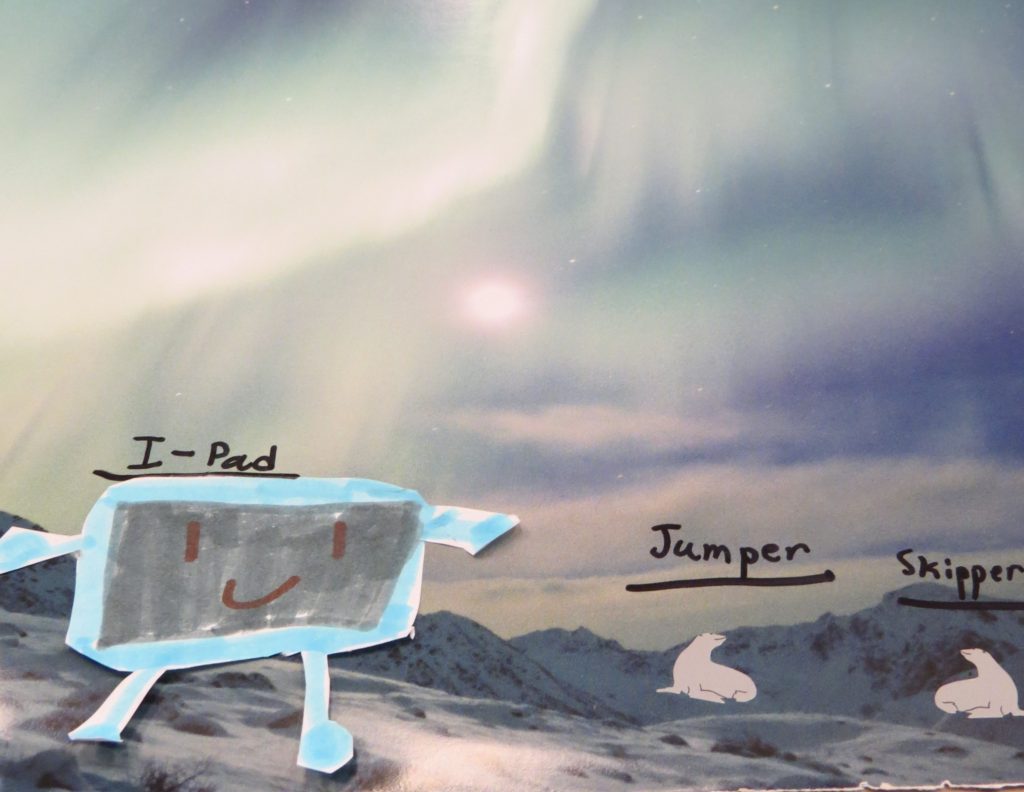
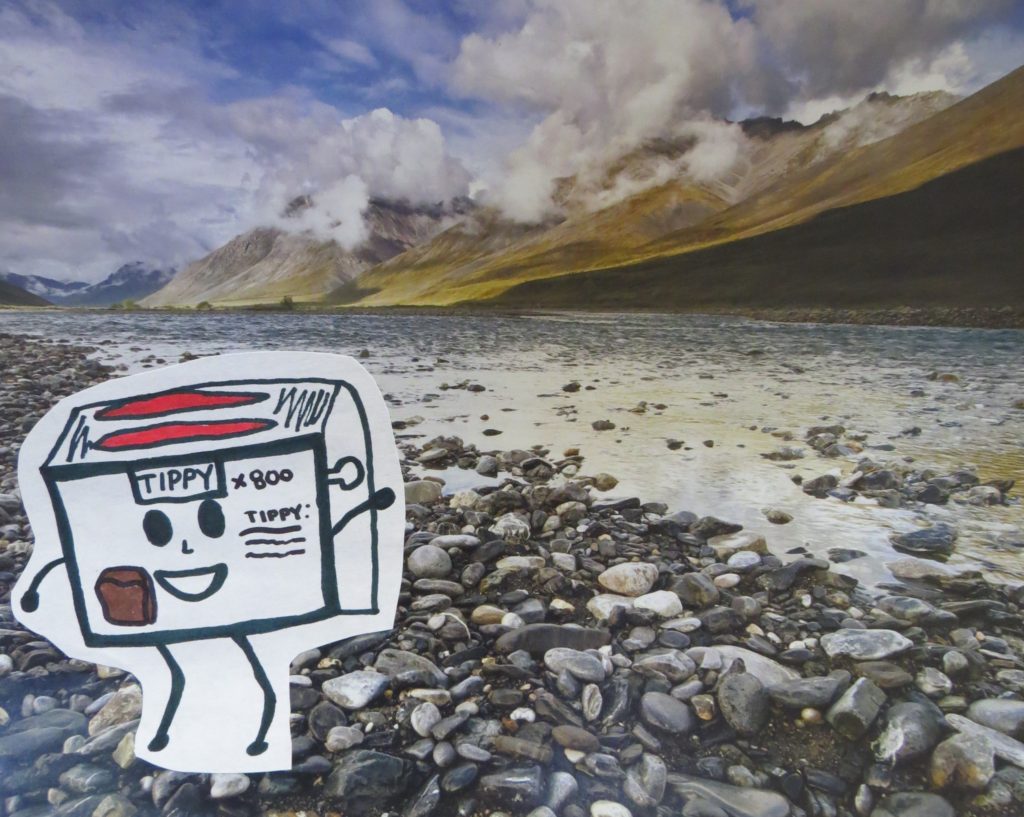
Lesson 5: SOLAR SEEDS
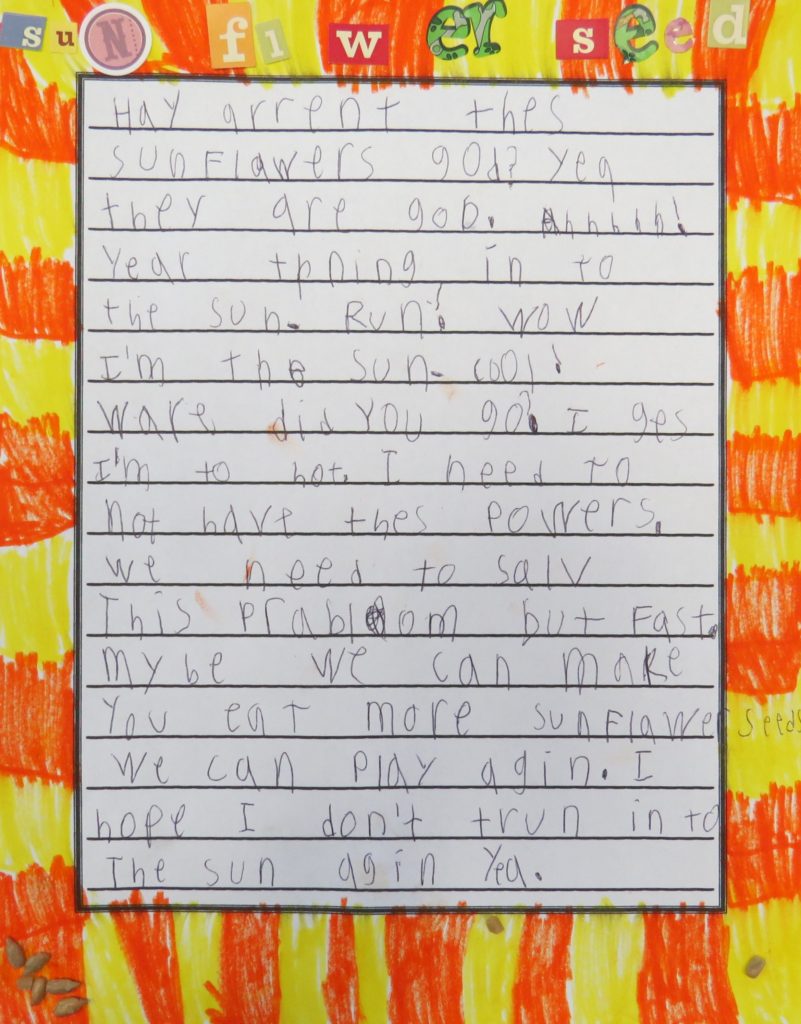
Story Line: You are eating sunflower seeds. Suddenly, you have a special super power related to the sun. You either keep it and use it or find a way to get rid of it.
Suggested Art Accent: Make a bright sunny border using marker. Then, eat sunflower seeds while gluing some onto the border!
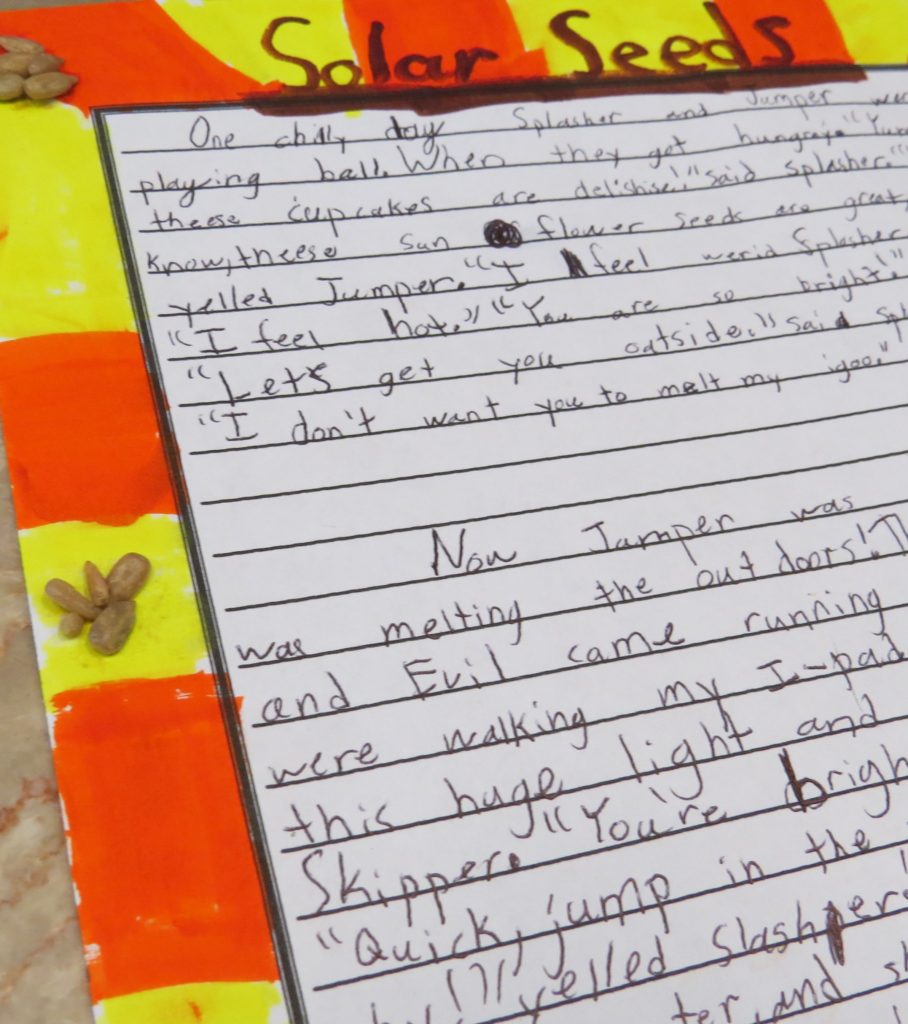
Lesson 6: SUPER YOU-Discover Your Own Super Power
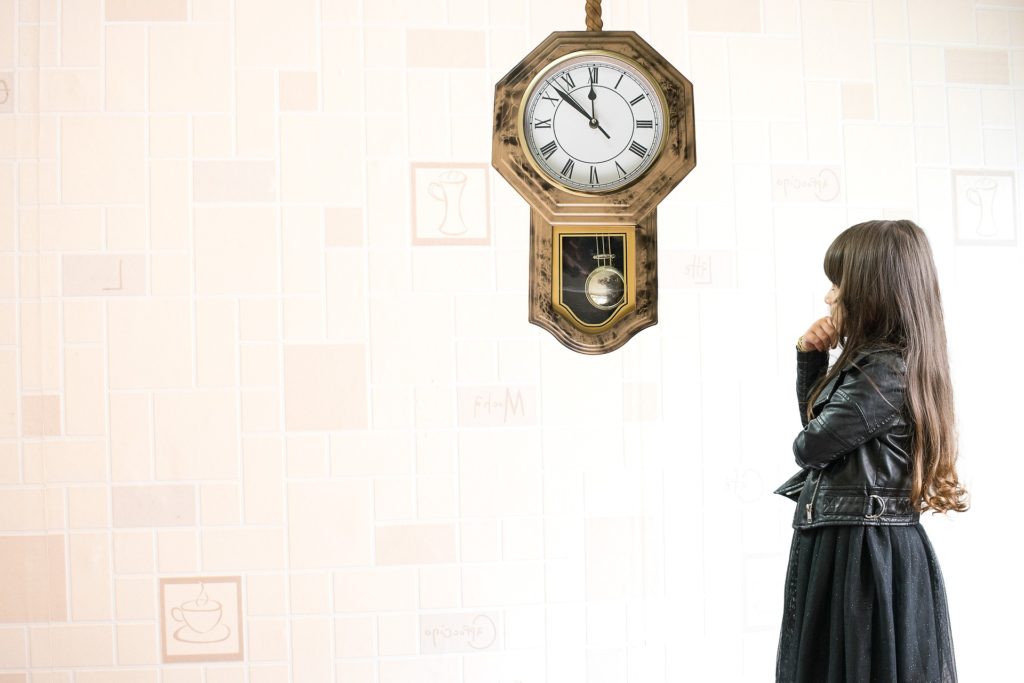
Story Line: You live in a futuristic setting. One day, you discover you have a super power. You learn to live with it or get rid of it.
Suggested Art Accent: Use ABC Stickers* or marker to write the title.
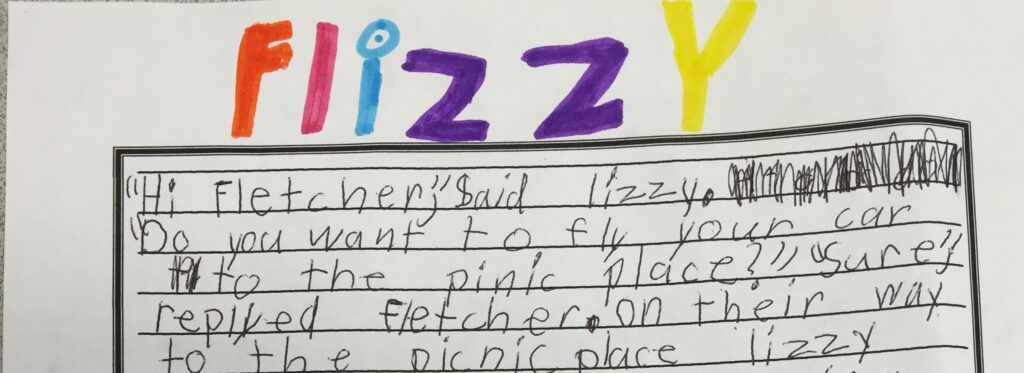
GAMES TO PLAY!
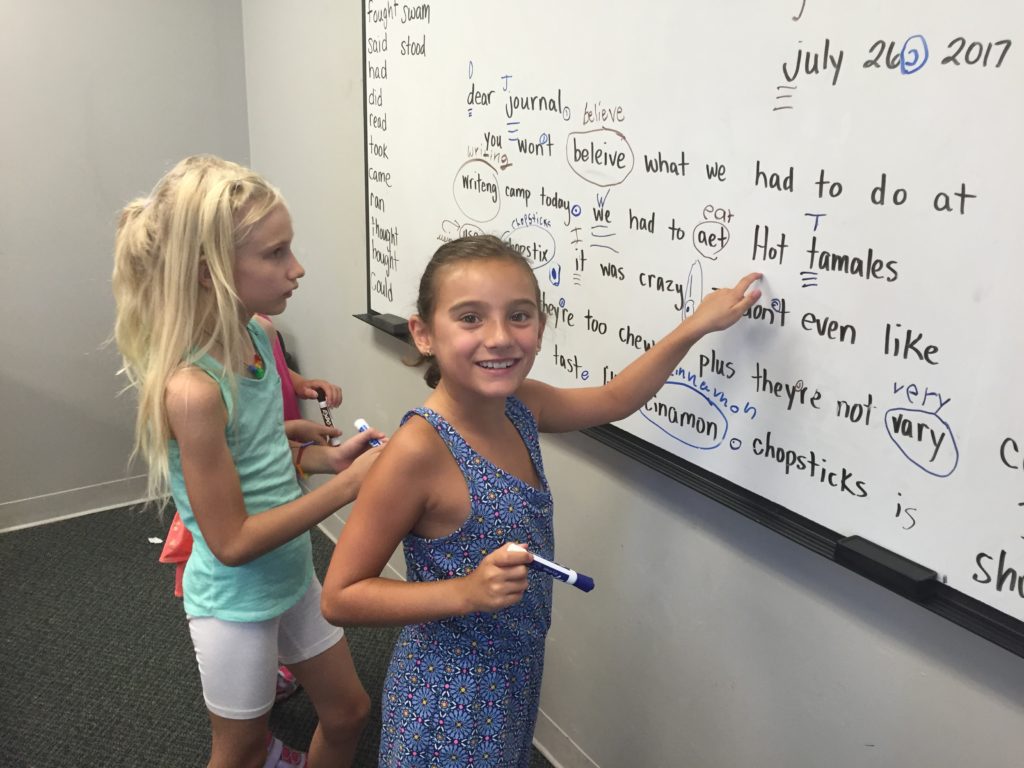
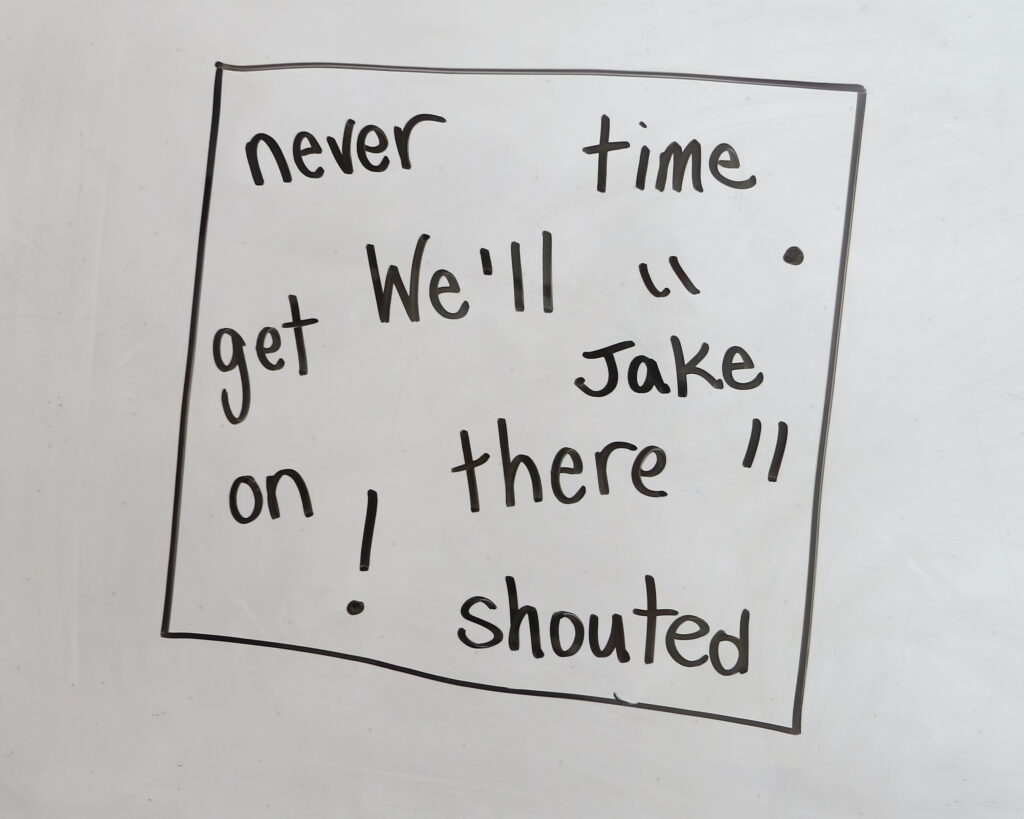
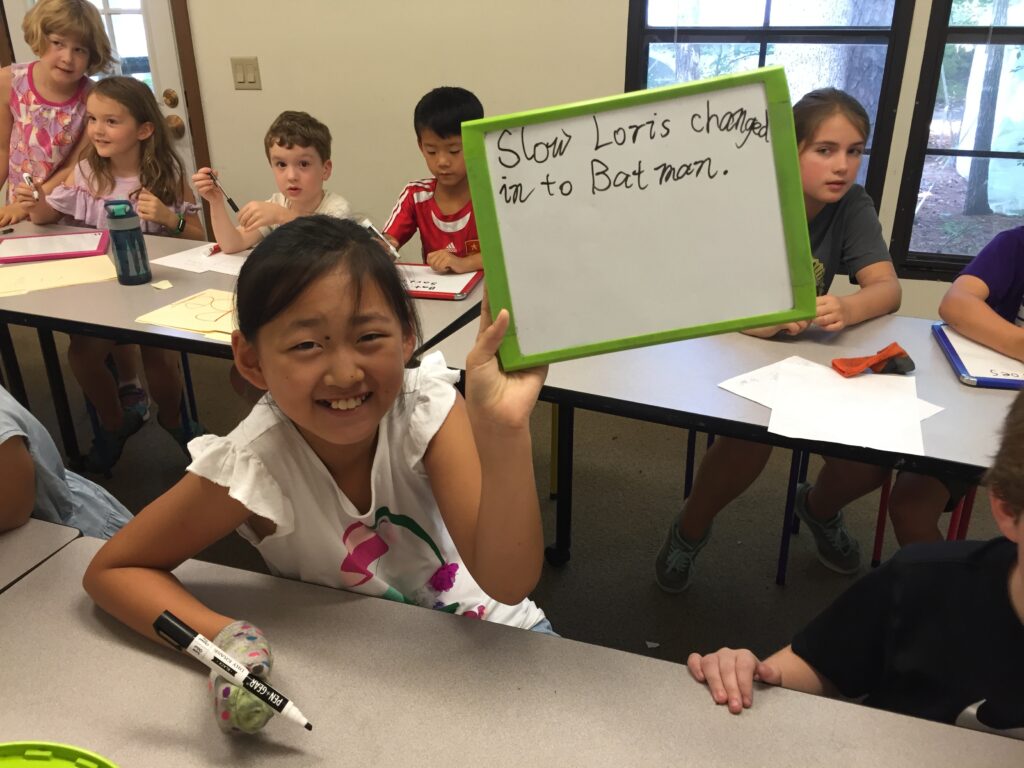
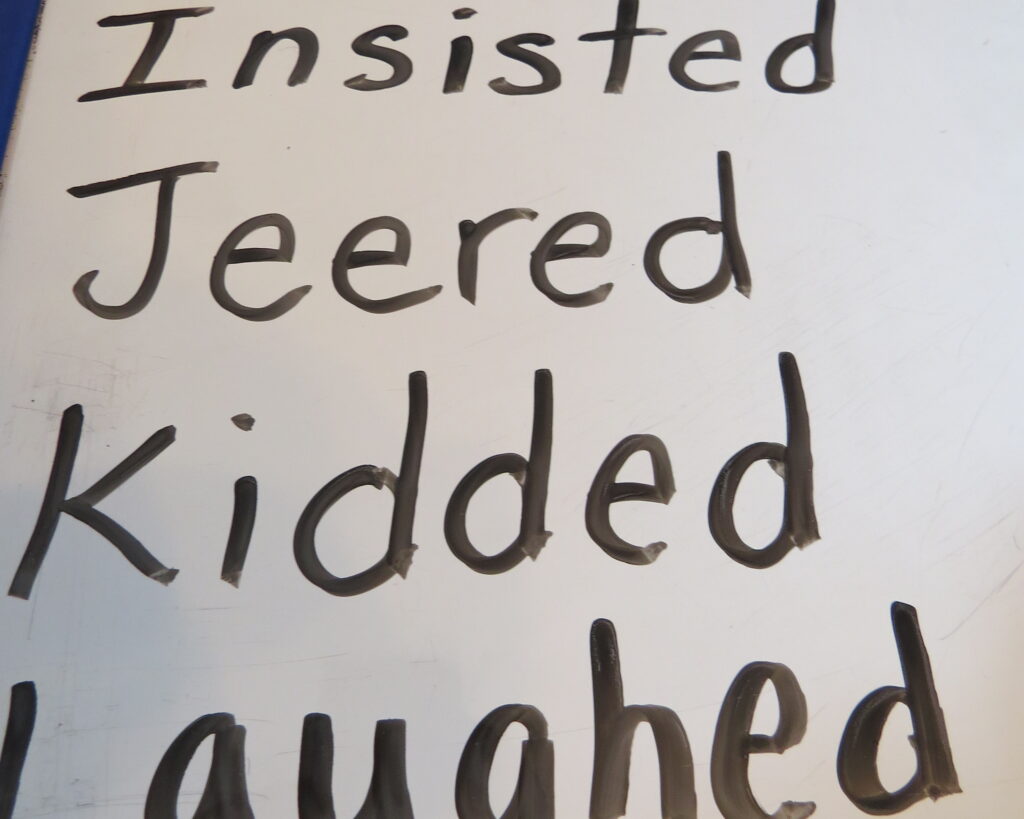
Spin a Category-60 Seconds–For this game, choose categories specific the story that the students write. We played this after writing Birthday Bash and used the following categories:
- Decorations
- Cake Flavors
- Colors
- Kinds of Candy
- Countries
- People (girl, boy, dentist, cowboy etc.)

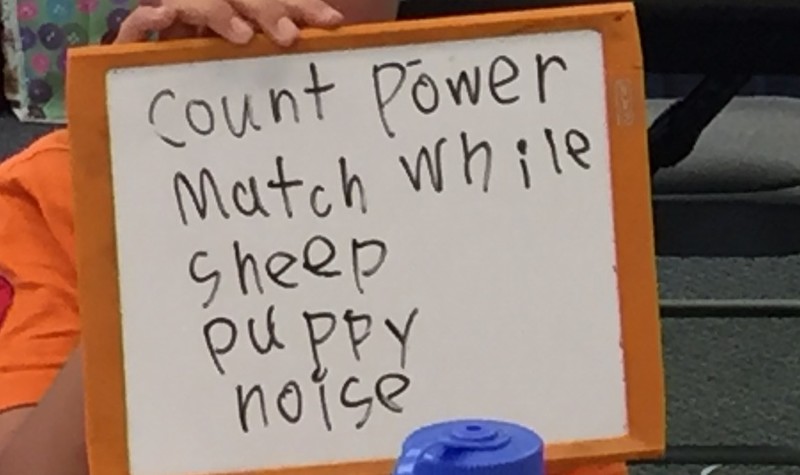
More Science Fiction Writing Lessons
Check out more Science Fiction Writing Lessons that I’ve posted!
A Barn, Cows and Snow-Science Fiction
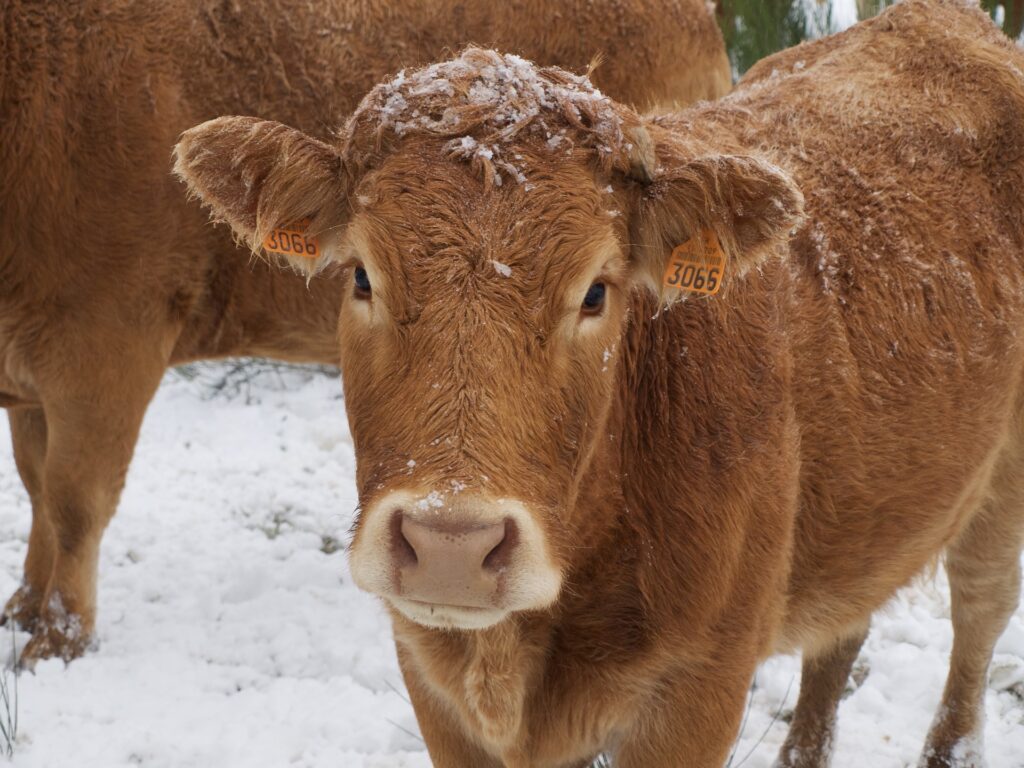
Leprechaun Attack-Science Fiction

